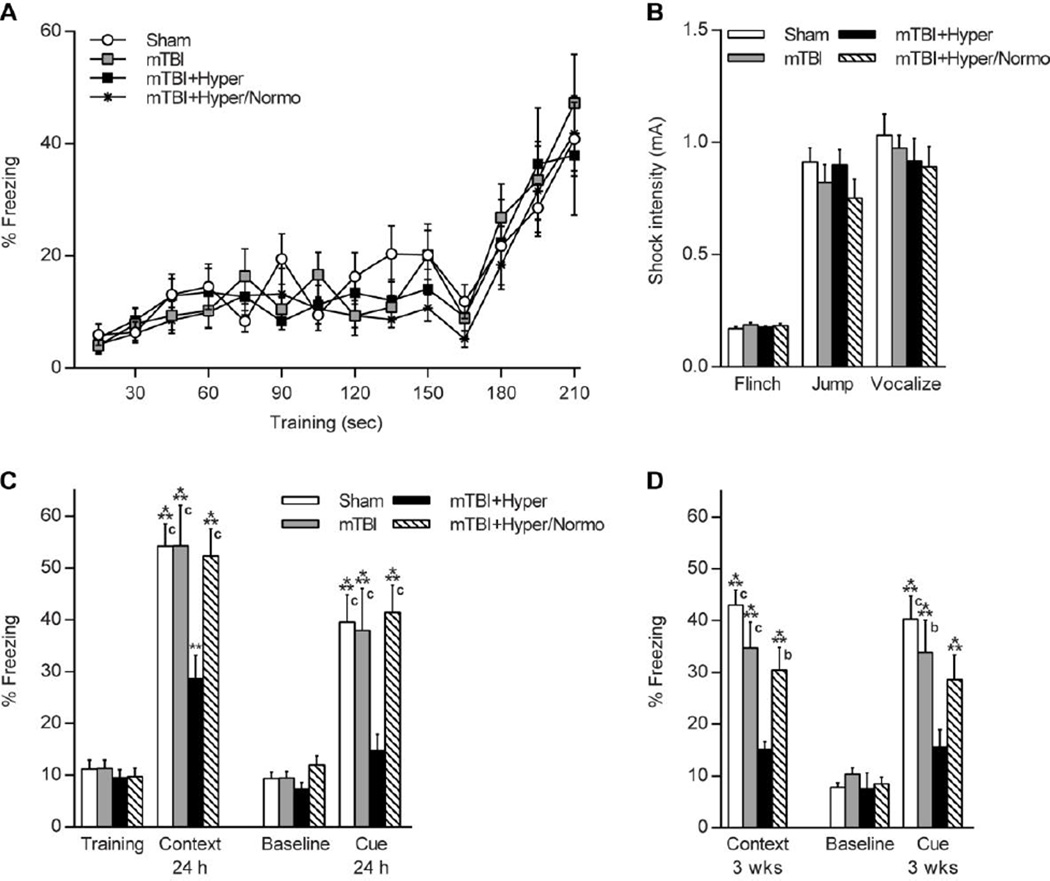Fig. 1.
Improvement in cue and contextual fear conditioning by cooling after a mTBI. (A) Freezing responses during training were not significantly different between sham, normothermic mTBI (mTBI), hyperthermic mTBI (mTBI+Hyper), or hyperthermic/normothermic mTBI (mTBI+Hyper/Normo) animals. (B) Shock threshold sensitivity was similar between all animal groups. (C) Cue and contextual fear conditioning at 24 h after training. All animal groups demonstrated significant contextual fear conditioning. Hyperthermic mTBI animals froze significantly less than sham, normothermic mTBI, or hyperthermic/normothermic mTBI animals. Cue fear conditioning was significantly impaired in hyperthermic mTBI animals as compared to sham, normothermic mTBI, and hyperthermic/normothermic mTBI animals. (D) Cue and contextual fear conditioning at 3 weeks after training. Sham, normothermic mTBI, and hyperthermic/normothermic mTBI animals demonstrated significant cue and contextual fear conditioning. Hyperthermic mTBI animals demonstrated no significant retention of either cue or contextual fear conditioning at 3 weeks. ***p<0.001 vs training for contextual fear conditioning, ***p<0.001 vs baseline for cue fear conditioning, bp<0.051, cp<0.001 vs hyperthermic mTBI animals, repeated measures two-way ANVOA and Tukey’s post-hoc analysis. n=12 sham animals, n=11 normothermic mTBI animals, n=11 hyperthermic mTBI animals, n=12 hyperthermic/normothermic mTBI animals.

